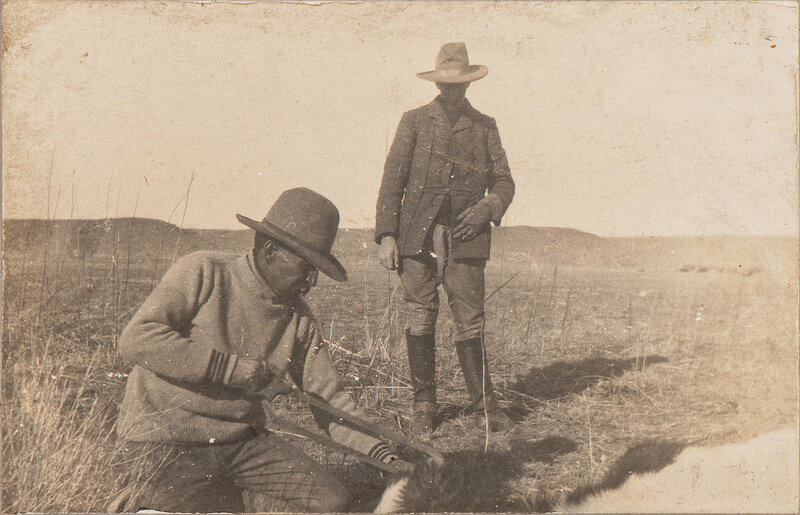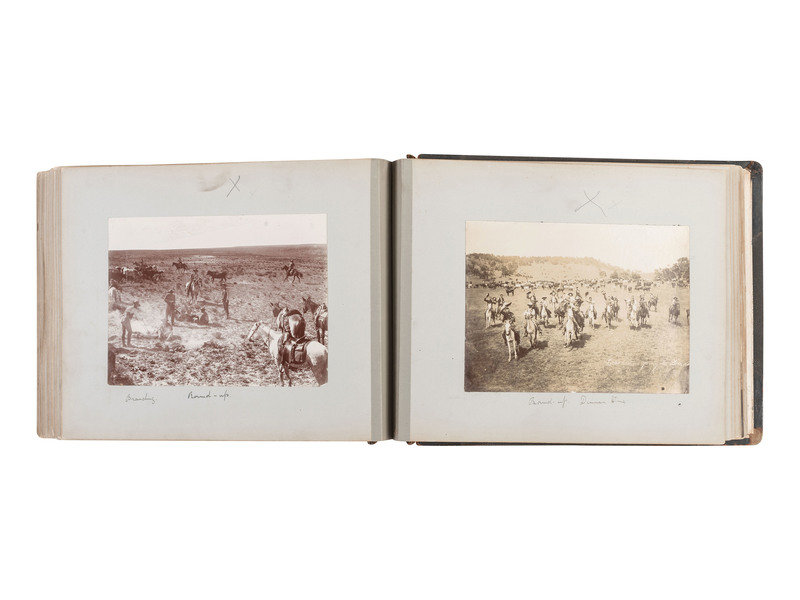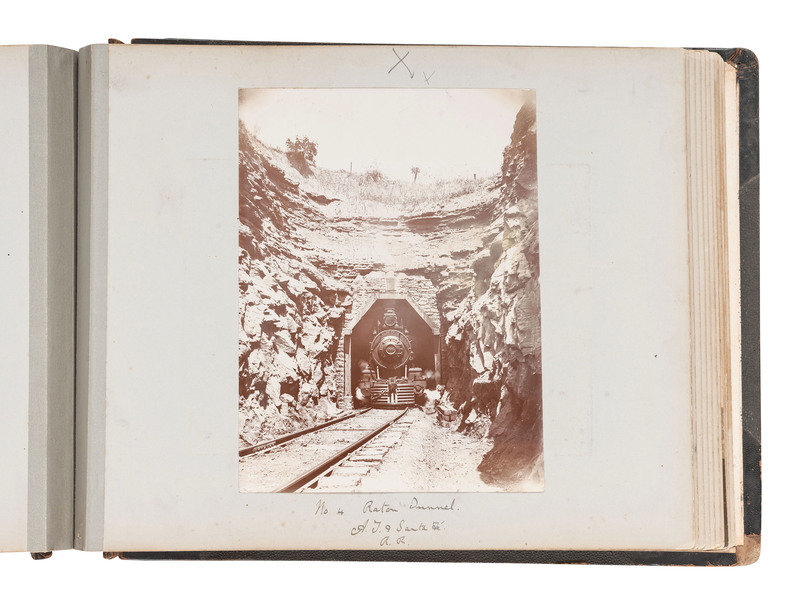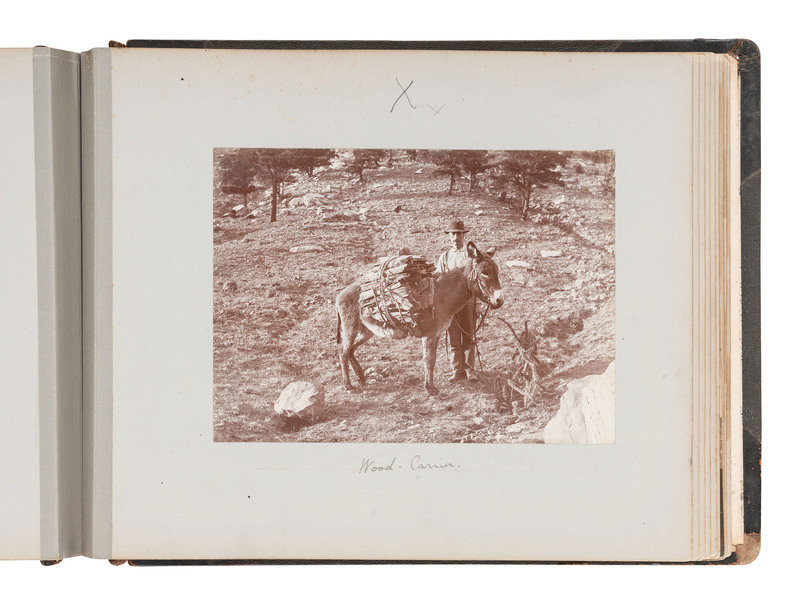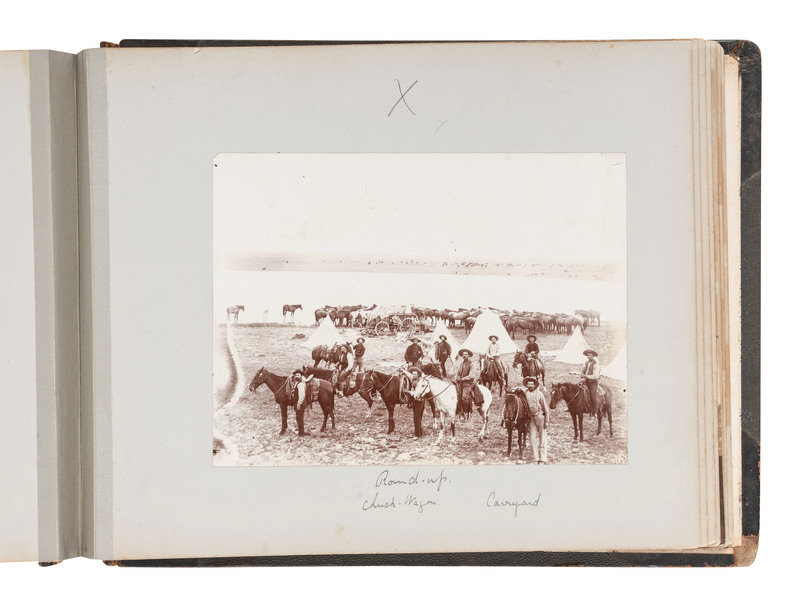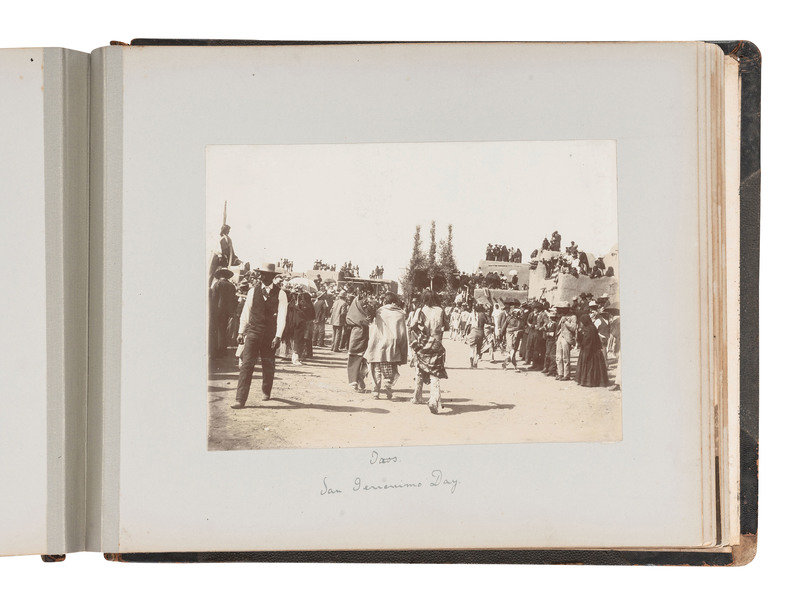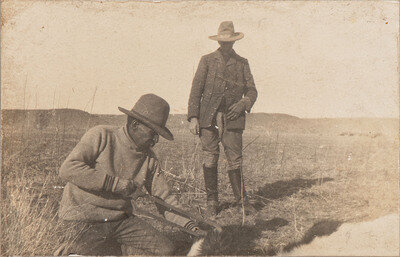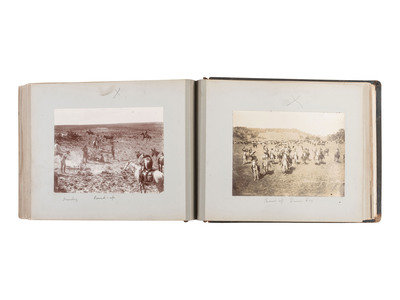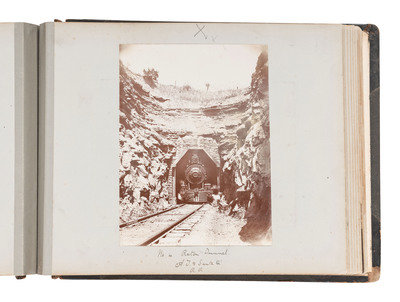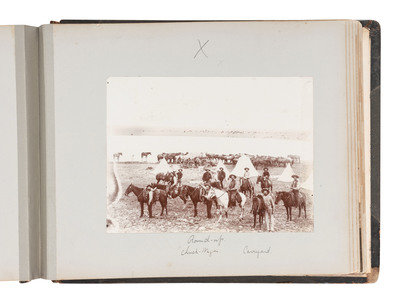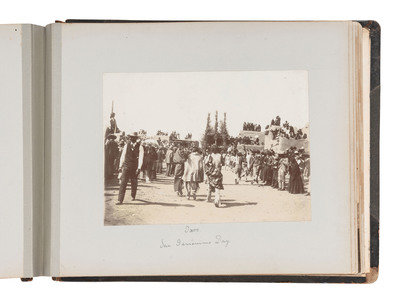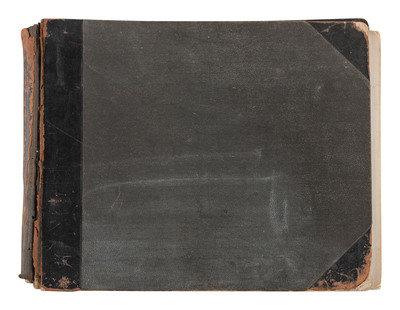[WESTERN AMERICANA - NEW MEXICO]. Album containing photographs of cowboys and cattle in Colfax County, New Mexico, incl. views of the Urraca Ranch. Ca 1885-1895.
Sale 1250 - American Historical Ephemera & Photography
Nov 30, 2023
10:00AM ET
Live / Cincinnati
Own a similar item?
Estimate
$2,000 -
3,000
Price Realized
$1,260
Sold prices are inclusive of Buyer’s Premium
Lot Description
[WESTERN AMERICANA - NEW MEXICO]. Album containing photographs of cowboys and cattle in Colfax County, New Mexico, incl. views of the Urraca Ranch. Ca 1885-1895.
Oblong quarto album (approx. 10 x 12 1/2 in.). 135 photographs, majority approx. 3 1/2 x 4 1/2 in. or smaller, with the exception of 13 photographs measuring 5 3/4 x 8 in. Photographs mounted recto/verso on 9 3/4 x 11 3/4 in. album pages, most with manuscript caption (toning, some with fading, some with small surface abrasions, scattered spotting, some with residue on surface). Contemporary quarter calf (front detached, back partially detached, heavy wear to extremities).
The album contains 80+ photographs of western subjects, most notably cowboys and cattle. The majority of the photographs were taken in and around Cimarron, Elizabethtown, Raton, and Springer, all of Colfax County, New Mexico, around 1885-1895 when the Urraca Ranch was owned by an Englishman named Francis Clutton. Most, if not all, of this land was once part of the area known as the Maxwell Land Grant. The present album was discovered in England, and according to the 1901 census, Francis Clutton was visiting England in 1901, so it is possible that he brought the album with him at that time. Clutton subsequently died in Colorado in 1901, having become a naturalized American citizen.
The album contains 80+ photographs of western subjects, most notably cowboys and cattle. The majority of the photographs were taken in and around Cimarron, Elizabethtown, Raton, and Springer, all of Colfax County, New Mexico, around 1885-1895 when the Urraca Ranch was owned by an Englishman named Francis Clutton. Most, if not all, of this land was once part of the area known as the Maxwell Land Grant. The present album was discovered in England, and according to the 1901 census, Francis Clutton was visiting England in 1901, so it is possible that he brought the album with him at that time. Clutton subsequently died in Colorado in 1901, having become a naturalized American citizen.
The 68 smaller photographs (approx. 3 1/2 x 4 1/2 in. or smaller) are more candid in nature, providing views taken in and around the ranch. While the photographer is unknown, he was almost certainly an enthusiastic amateur with a desire to document ranch life as he experienced it. One of the characters pictured in the album is a man identified as Marion Littrell. Although Littrell was working as a cowboy at the ranch in Urraca when these photographs were taken, he subsequently became sheriff of Colfax County. At that time, he was involved in quite a number of local 'events' and was one of the few men known to have 'faced down' the infamous gunfighter and enforcer Clay Allison. Littrell's well-documented life journey has been used to calculate the time in which these photographs were likely taken.
The 13 large photographs (approx. 5 3/4 x 8 in.) appear to have been professionally produced. One of the photographs is credited in the negative to William A. White, who operated a studio in Raton, New Mexico at this time. Although the remaining 12 images lack a photographer's imprint, it is possible that they were taken by White as well. Scenes include: View on Urraca Ranch. Spanish Peaks. -- View on Urraca Ranch. Spanish Peaks. E'town. -- No 1 Raton Pass, A.T. & Santa Fé R.R. -- No 4 Raton Tunnel. A.T. & Santa Fé R.R. -- J. Shanks Breaking. -- Wood Carrier. -- Branding / Round-up. -- Round-up Dinner Time. With "Cowboys going to Dinner" written in negative. -- Elizabethtown, NM. A sign for the "Golden Era Hotel" is visible on the roof of one of the buildings at far left. The entire area, up to Harry Brainard's saloon, was destroyed in a fire in 1903, making this an important image of the New Mexico town. -- Round-up, Chuck-Wagon, Caviyard. A "caviyard" is "a herd of lame and sick cattle" (See "The Diary of Tommy Gordon Bugle, July to December 20, 1867."). -- Taos. San Geronimo Day (2). -- Santa Fé, Good Friday.
The remaining 50+ photographs provide candid views documenting travels outside of the United States, including Croatia, Sicily, Greece, Venice, and Turkey, many accompanied by manuscript captions identifying the location or landmark. A spreadsheet outlining the contents of the album is available upon request.
A rare album providing a fascinating look at ranch life in New Mexico during the last quarter of the 19th century.
The remaining 50+ photographs provide candid views documenting travels outside of the United States, including Croatia, Sicily, Greece, Venice, and Turkey, many accompanied by manuscript captions identifying the location or landmark. A spreadsheet outlining the contents of the album is available upon request.
A rare album providing a fascinating look at ranch life in New Mexico during the last quarter of the 19th century.
This lot is located in Cincinnati.
Condition Report
Auction Specialist

